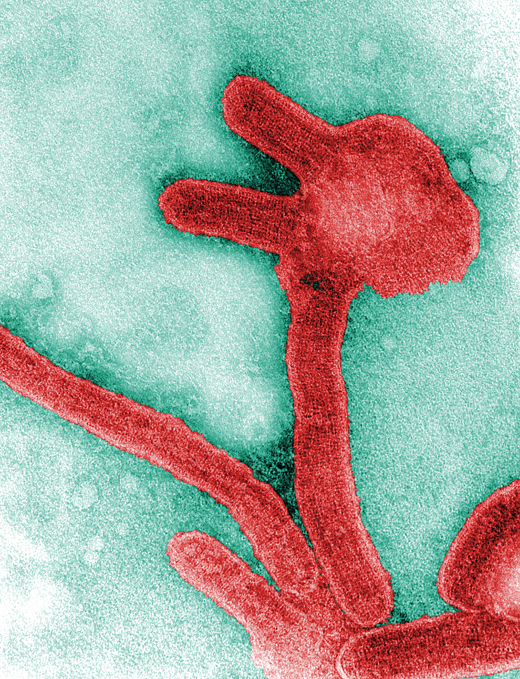Novel Drug Treatment Protects Primates from Deadly Marburg Virus

For the first time, scientists have demonstrated the effectiveness of a small-molecule drug in protecting nonhuman primates from the lethal Marburg virus. Their work, published online March 2 in the journal Nature, is the result of a continuing collaboration between Army scientists and industry partners that also shows promise for treating a broad range of other viral diseases.
According to senior author Sina Bavari, Ph.D., chief of molecular and translational sciences, the drug (known as BCX4430) protected cynomolgous macaques from Marburg virus infection when administered by injection as long as 48 hours post-infection. Bavari and his team at the U.S. Army Medical Research Institute of Infectious Diseases (USAMRIID) also found that BCX4430 protected guinea pigs exposed to Marburg virus by the inhalation route.
Marburg and its "cousin," Ebola virus, cause hemorrhagic fever with case fatality rates as high as 90 percent in humans. The viruses, which are infectious by aerosol (although more commonly spread through blood and bodily fluids of infected patients), are of concern both as global health threats and as potential agents of biological warfare or terrorism. Currently there are no available vaccines or therapies. Research on both viruses is conducted in Biosafety Level 4, or maximum containment, laboratories, where investigators wear positive-pressure "space suits" and breathe filtered air as they work.
According to the research team, BCX4430, which was developed by BioCryst Pharmaceuticals, Inc., also demonstrated activity against a broad range of other RNA viruses -- including the emerging viral pathogen Middle East respiratory syndrome coronavirus (MERS-CoV) -- when tested in cell culture.
"This study demonstrates the importance of government-industry collaboration," said Col. Erin P. Edgar, commander of USAMRIID. "Developing filovirus medical countermeasures is a top biodefense priority for the United States. When federal assets like USAMRIID team up with cutting-edge partners in private industry, we can make real progress toward achieving that goal."
The paper's first author, Travis K. Warren, Ph.D., a principal investigator at USAMRIID, said findings from the work show the drug acts by interfering with the internal "machinery" of the Marburg virus, preventing it from replicating its genetic material. He said the team is currently planning additional studies to determine whether the therapeutic window can be extended beyond 48 hours. In addition, BioCryst plans to file investigational new drug applications for intravenous and intramuscular BCX4430 for the treatment of Marburg virus disease, and to conduct Phase 1 human clinical trials, according to Warren.
Collaborators on the study included USAMRIID, Fort Detrick, Md.; BioCryst Pharmaceuticals, Inc. Durham, N.C.; and MedExpert Consulting, Inc., Indialantic, Fla.
The work was supported by The Joint Science and Technology Office for Chemical and Biological Defense of the Defense Threat Reduction Agency. The National Institute of Allergy and Infectious Diseases of the National Institutes of Health, Department of Health and Human Services, also provided partial support for in vitro studies.
USAMRIID's mission is to protect the warfighter from biological threats and to be prepared to investigate disease outbreaks or threats to public health. Research conducted at USAMRIID leads to medical solutions -- vaccines, drugs, diagnostics, and information -- that benefit both military personnel and civilians. The Institute plays a key role as the lead military medical research laboratory for the Defense Threat Reduction Agency's Joint Science and Technology Office for Chemical and Biological Defense. USAMRIID is a subordinate laboratory of the U.S. Army Medical Research and Materiel Command.














